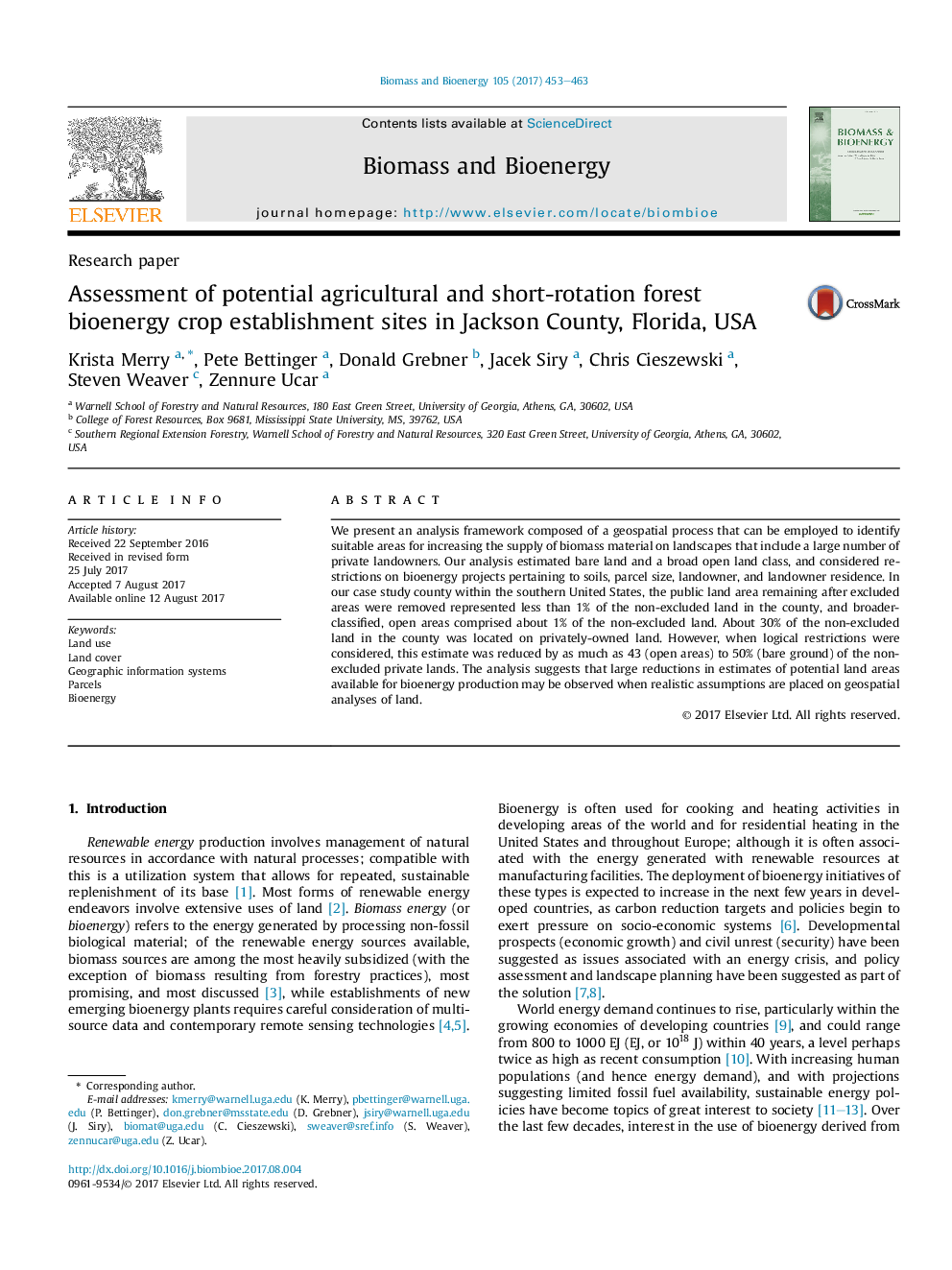| Article ID | Journal | Published Year | Pages | File Type |
|---|---|---|---|---|
| 4996183 | Biomass and Bioenergy | 2017 | 11 Pages |
â¢Biomass production in the southern United States.â¢Ownership information via parcel data.â¢Information useful for alternative energy analysis.
We present an analysis framework composed of a geospatial process that can be employed to identify suitable areas for increasing the supply of biomass material on landscapes that include a large number of private landowners. Our analysis estimated bare land and a broad open land class, and considered restrictions on bioenergy projects pertaining to soils, parcel size, landowner, and landowner residence. In our case study county within the southern United States, the public land area remaining after excluded areas were removed represented less than 1% of the non-excluded land in the county, and broader-classified, open areas comprised about 1% of the non-excluded land. About 30% of the non-excluded land in the county was located on privately-owned land. However, when logical restrictions were considered, this estimate was reduced by as much as 43 (open areas) to 50% (bare ground) of the non-excluded private lands. The analysis suggests that large reductions in estimates of potential land areas available for bioenergy production may be observed when realistic assumptions are placed on geospatial analyses of land.
